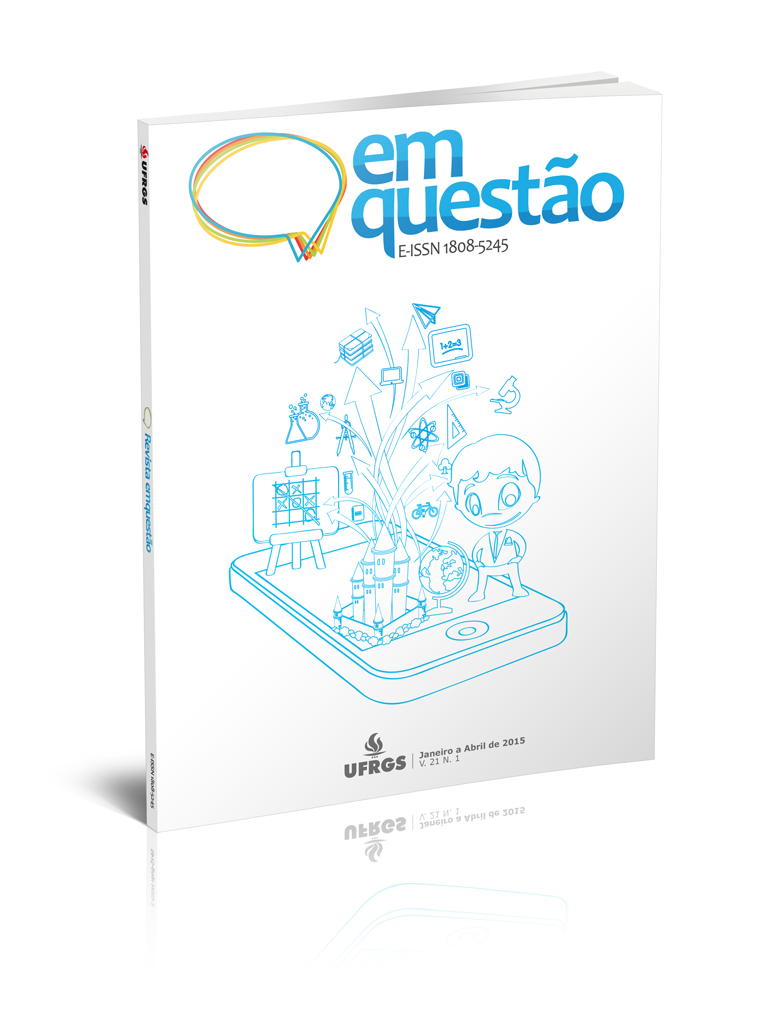Semantic Web technologies for retrieval of data and agricultural information: a study of International Information Systemm of the Agricultural Science and Technology (AGRIS)
DOI:
https://doi.org/10.19132/1808-5245211.173-192Keywords:
Agricultural information. Semantic Web. Retrieval of data and information.Abstract
The agricultural information is distributed in different actors and institutions. A lot of this information is available in digital format and can be accessed with web technologies. However, the diversity in conceptual coverage of the topics in the area of lexical heterogeneity of terms used for research are barriers in data retrieval of agricultural information. The Semantic Web technologies can contribute in reducing those barriers by standardizing the semantic representation of information resources available on the web. Thus, this paper aims to describe the semantic technologies used in the Information System of the International Agricultural Science and Technology - AGRIS, and point out their role in retrieval of data and agricultural information. Through a literature review and an exploratory analysis on the AGRIS web portal we describe how technologies can be used by the system and its main contributions.Downloads
References
ANIBALDI, Stefano et al. Migrating bibliographic datasets to the semantic web: the AGRIS case. Semantic Web: Interoperability, Usability, Applicability an IOS Press Journal, v.2, p.1-9, 2013. Disponível em: <http://www.semantic-web-journal.net/system/files/swj463.pdf>. Acesso em: 10 jan. 2015.
BERNERS-LEE, Tim. Uniform Resource Identifier (URI): Generic Sintax. 2005. Disponível em: <http://tools.ietf.org/html/rfc3986>. Acesso em: 23 abr. 2014.
BERNERS-LEE. Tim. Long Live the Web. Scientific American, New York, v. 303, n.6, p.80-85, 2010. Disponível em: <http://www.cs.virginia.edu/~robins/Long_Live_the_Web.pdf>. Acesso em: 14 abr. 2014.
FOOD AND AGRICULTURE ORGANIZATION OF THE UNITED NATIONS (FAO). AGRIS: International Information System for the Agricultural Science and Technology. Roma: FAO, 2014a. Disponível em: <http://agris.fao.org/agris-search/index.do>. Acesso em: 10 jan. 2014.
FOOD AND AGRICULTURE ORGANIZATION OF THE UNITED NATIONS (FAO). Knowledge and information sharing through the AGRIS Network. Roma: FAO, 2014b. Disponível em: <http://agris.fao.org/knowledge-and-information-sharing-through-agris-network>. Acesso em: 10 jan. 2014.
HENDLER, Jim; BERNERS-LEE, Tim. From the Semantic Web to social machines: a research challenge for AI on the World Wide Web. Artificial Intelligence Journal, v. 174, p. 156-161, 2009. Disponível em: <http://www.sciencedirect.com/science/article/pii/S0004370209001404>. Acesso em: 10 jan 2015.
RAMALHO, Rogério; VIDOTTI, Silvana; FUJITA, Mariângela. Web Semântica: uma investigação sob o olhar da Ciência da Informação. DataGramaZero – Revista de Informação, Rio de Janeiro, v. 8, n. 6, 2007. Disponível em: <http://www.dgz.org.br/dez07/Art_04.htm>. Acesso em: 10 jan. 2015.
ROUSSEY, Catherine et al. Ontologies in Agriculture. In: INTERNATIONAL CONFERENCE ON AGRICULTURAL ENGINEERING, 11., 2010, Shanghai. Proceedings... Clermont-Ferrand: Ed. LIRIS, 2010. p. 178-188.
SALOKHE, Gauri; SINI, Margherita; KEIZER, Johannes. Case Study: the semantic web for the agricultural domain, semantic navigation of food, nutrition and agriculture journal. 2007. Disponível em: <http://www.w3.org/2001/sw/sweo/public/UseCases/FAO/>. Acesso em: 04 fev. 2014.
SANT’ANA, Ricardo. Ciclo de Vida dos Dados e o papel da Ciência da Informação. In: ENCONTRO NACIONAL DE PESQUISA EM CIÊNCIA DA INFORMAÇÃO, 14., 2013, Florianópolis. Anais... Rio de Janeiro: Associação Nacional em Pesquisa e Pós-Graduação em Ciência da Informação (ANCIB), 2013.
SANTAREM SEGUNDO, José Eduardo. Representação Iterativa: um modelo para repositórios digitais. 2010. Tese (Doutorado em Ciência da Informação) – Programa de Pós Graduação em Ciência da Informação, Universidade Estadual Paulista, Marília, 2010. Disponível em: <http://www.marilia.unesp.br/Home/Pos-Graduacao/CienciadaInformacao/Dissertacoes/santaremsegundo_je_do_mar.pdf >. Acesso em: 20 jan. 2015.
VIERO, Verônica; SILVEIRA, Ada. Apropriação de Tecnologias de Informação e Comunicação no meio rural brasileiro. Cadernos de Ciência e Tecnologia – Embrapa, Brasília, v. 28, n. 1, p. 257-277, 2011. Disponível em: <http://seer.sct.embrapa.br/index.php/cct/article/view/12042>. Acesso em: 17 jan. 2015.
WORLD WIDE WEB CONSORTIUM (W3C). Ontologies. Massachusetts: W3C/MIT, 2014c. Disponível em: <http://www.w3.org/standards/semanticweb/ontology>. Acesso em: 11 abr. 2014.
WORLD WIDE WEB CONSORTIUM (W3C). OWL 2 Web Ontology Language Document Overview (Second Edition). Massachusetts: W3C/MIT, 2012a. Disponível em: <http://www.w3.org/TR/owl2-overview>. Acesso em: 01 maio 2014.
WORLD WIDE WEB CONSORTIUM (W3C). OWL 2 Web Ontology Language: semantics and abstract syntax. Massachusetts: W3C/MIT, 2014a. Disponível em: <http://www.w3.org/TR/owl-semantics>. Acesso em: 01 maio 2014.
WORLD WIDE WEB CONSORTIUM (W3C). RDF 1.1 Concepts and Abstract Syntax. Massachusetts: W3C/MIT, 2014b. Disponível em: <http://www.w3.org/TR/rdf11-concepts>. Acesso em: 11 abr. 2014.
WORLD WIDE WEB CONSORTIUM (W3C). RDF Schema 1.1. Massachusettes: W3C/MIT, 2014d. Disponível em: <http://www.w3.org/TR/rdf-schema/#ch_introduction>. Acesso em: 22 jan. 2015.
WORLD WIDE WEB CONSORTIUM (W3C). SPARQL 1.1 Overview. Massachusetts: W3C/MIT 2013. Disponível em: <http://www.w3.org/TR/2013/REC-Sparql11-overview-20130321/>. Acesso em: 11 abr. 2014.
WORLD WIDE WEB CONSORTIUM. W3C XML Schema Definition Language (XSD) 1.1 Part 1: Structures. Massachusetts: W3C/MIT, 2012b. Disponível em: <http://www.w3.org/TR/xmlschema11-1/>. Acesso em: 17 jan. 2015.
Downloads
Published
How to Cite
Issue
Section
License
Copyright (c) 2015 Fábio Mosso Moreira, Ricardo César Gonçalves Sant'Ana, José Eduardo Santarem Segundo, Silvana Aparecida Borsetti Gregorio Vidotti

This work is licensed under a Creative Commons Attribution 4.0 International License.
Authors who publish with this journal agree to the following terms:
Authors will keep their copyright and grant the journal with the right of first publication, the work licensed under License Creative Commons Attribution (CC BY 4.0), which allows for the sharing of work and the recognition of authorship.
Authors can take on additional contracts separately for non-exclusive distribution of the version of the work published in this journal, such as publishing in an institutional repository, acknowledging its initial publication in this journal.
The articles are open access and free. In accordance with the license, you must give appropriate credit, provide a link to the license, and indicate if changes were made. You may not apply legal terms or technological measures that legally restrict others from doing anything the license permits.













